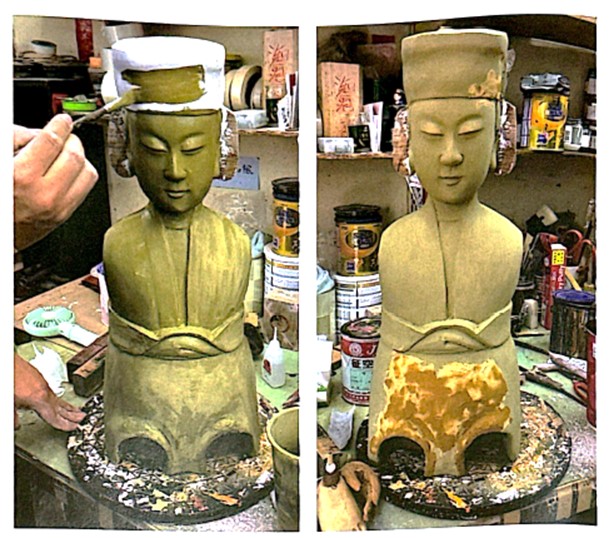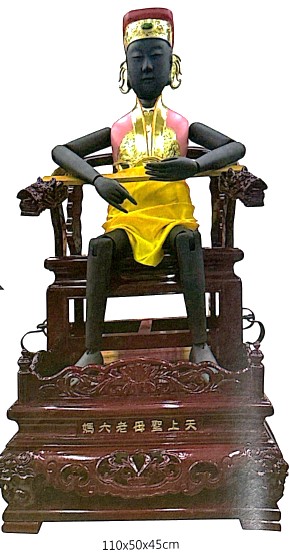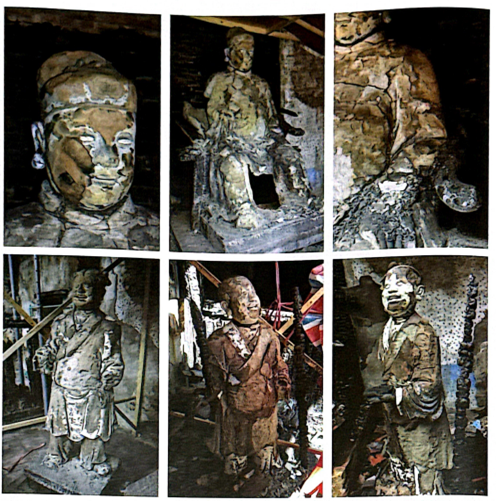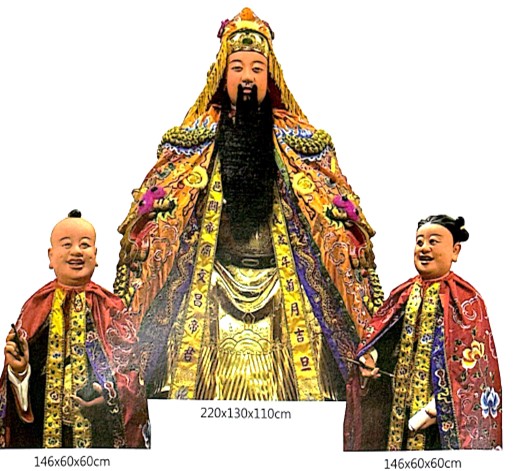
Restoration of Statues
In addition to being good at making statues, Master A-fa is also certified as a “Cultural Heritage Craft Preserver.” This craft is the technique for restoring and preserving cultural relics. The restoration is not limited to statues of gods, but also includes ancient cultural relics. In addition to the techniques of thread preparation, lacquer thread pulling, mineral paint, painting and coloring involved in statue sprucing, the Cultural Heritage Preservation Act also stipulates that restoration must be “having a heritage restored and reused” and “renovated as before.”
1. Restoration and reuse
The statues that need to be restored may have been in disrepair for a long time or may have experienced natural or man-made disasters, and their original appearances may no longer be visible, so they may not be completely restored. However, Master A-fa can speculate based on the remaining parts. Through “restoration and reuse,” Master A-fa is able to try to use the old parts as much as possible and add new coatings to roughly restore the statue to its previous appearance, or even redesign it to make it better meet modern needs.
For example, Master A-fa once restored the Wenchang Emperor of Guandi Temple. The Guandi Temple was built in 1735. It suffered a fire in February 2017. Moreover, a large amount of water had to be poured in to extinguish the fire. The surface of the statue cracked due to the fire and water and was severely damaged and fell off in flakes. The original gold foil and the lacquer thread were long gone. Fortunately, the clay of the statue structure had not disappeared. In October 2017, Master A-fa began to restore the statue. He first measured the dimensions and recorded them, then applied glue, and used new soil and old soil to repair it. Master A-fa used hemp rope to strengthen the statue structure. After the soil repair was completed, he applied a layer of hemp gauze. He applied loess primer and tissue paper to the statue, then used lacquer thread to make the dragon robe totem, attached gold foil, painted the statue with mineral paint, and added a new surface layer to the statue to restore the original appearance. However, the statue can no longer be the same as the old one, so this is restoration and reuse.
In March 2018, Master A-fa also used a similar method to repair the statue of Lao Liu Ma in Nanyao Temple that was severely damaged by fire. The statue of Lao Liu Ma in Nanyao Temple is made of soft wood. The wood was carbonized after the fire. As a result, Master A-fa could only use chemicals to solidify the carbonized part first, repair the soil to create the prototype of the face, apply it with linen gauze to increase the surface toughness and hardness, and then apply primer and fine-tune it. After the face of the statue was repaired, Master A-fa then assembled the hands and feet, added lacquer thread carving decoration, attached gold foil, and finally painted and modified the statue to complete the restoration.
2Renovated as before
As the term suggests, “renovated as before” requires craftsmen to restore a piece of art to the same old state, including the color and texture that have faded due to age. The difficulty is actually higher than making a new one. In general, this repair method is used for statues with less damage
Master A-fa repair the statue of Lao Liu Ma in Nanyao Temple:



Master A-fa restored the Wenchang Emperor of Guandi Temple:

before.

after.

.png)

